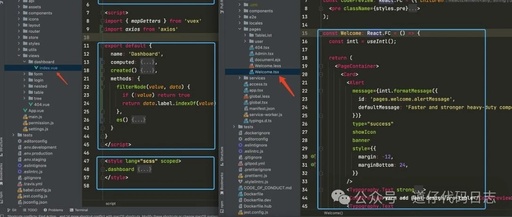Text processing is a well-known topic in Python, especially in the field of NLP (Natural Language Processing), which almost relies on various text preprocessing operations. For instance, tokenization, part-of-speech tagging, syntax analysis, and even generating word clouds are essential tasks. NLTK (Natural Language Toolkit) is a Python library specifically designed for text processing, packed with features that can meet all your text processing needs. It not only boasts powerful capabilities but also comes with many datasets and tools, making it incredibly convenient.
1. Installing NLTK
First, install NLTK using pip:
pip install nltk
Sometimes, NLTK’s functionalities require additional resources, such as dictionaries or corpora. After installation, it’s best to load its resource manager:
import nltk
nltk.download()
A window will pop up where you can select the resources you need. If you want to save time, you can also use nltk.download('all') to download everything at once, but the files will be quite large.
2. Text Preprocessing
Tokenization
Tokenization is the first step in text processing, used to split a large piece of text into individual words or sentences.
from nltk.tokenize import word_tokenize, sent_tokenize
text = "NLTK is a powerful toolkit. It can help us process text data!"
# Split by sentence
sentences = sent_tokenize(text)
print("Sentence split result:", sentences)
# Split by word
words = word_tokenize(text)
print("Word split result:", words)
The output will be as follows:
Sentence split result: ["NLTK is a powerful toolkit.", "It can help us process text data!"]
Word split result: ["NLTK", "is", "a", "powerful", "toolkit", ".", "It", "can", "help", "us", "process", "text", "data", "!"]
NLTK’s tokenizer can handle both Chinese and English, accurately splitting sentences even with punctuation.
Tip: When using word_tokenize, remember to install the punkt module (nltk.download('punkt')), otherwise it will throw an error.
Removing Stopwords
Often, common words (like “的”, “是”, “and”, “the”) do not add much meaning to text analysis, so we can remove them.
from nltk.corpus import stopwords
from nltk.tokenize import word_tokenize
text = "This is a simple example to demonstrate how to remove stopwords."
words = word_tokenize(text)
# Load Chinese stopwords
nltk.download('stopwords')
stop_words = set(stopwords.words('chinese'))
# Remove stopwords
filtered_words = [word for word in words if word not in stop_words]
print("Result after removing stopwords:", filtered_words)
Result:
Result after removing stopwords: ['simple', 'example', 'demonstrate', 'how', 'remove', 'stopwords', '.']
NLTK comes with stopword lists for multiple languages, allowing you to choose the appropriate language based on your needs.
Lemmatization
Lemmatization is the process of reducing words to their base forms, such as reducing “running” to “run”.
from nltk.stem import WordNetLemmatizer
nltk.download('wordnet')
lemmatizer = WordNetLemmatizer()
print("Lemmatization of running:", lemmatizer.lemmatize("running", pos="v"))
print("Lemmatization of better:", lemmatizer.lemmatize("better", pos="a"))
Result:
Lemmatization of running: run
Lemmatization of better: good
Here, the pos parameter indicates the part of speech, where v stands for verb and a stands for adjective. Adding part-of-speech tagging can enhance the accuracy of lemmatization.
3. Part-of-Speech Tagging
Part-of-speech tagging is used to label each word with its part of speech (noun, verb, adjective, etc.). NLTK’s pos_tag method can easily accomplish this.
from nltk import pos_tag
from nltk.tokenize import word_tokenize
text = "NLTK makes text processing easy."
words = word_tokenize(text)
nltk.download('averaged_perceptron_tagger')
tags = pos_tag(words)
print("Part-of-speech tagging result:", tags)
Result:
Part-of-speech tagging result: [('NLTK', 'NNP'), ('makes', 'VBZ'), ('text', 'NN'), ('processing', 'NN'), ('easy', 'JJ'), ('.', '.')]
-
NNindicates noun,VBZindicates verb, andJJindicates adjective. -
Part-of-speech tagging is very useful for tasks such as syntax analysis and sentiment analysis.
4. Generating Word Clouds
NLTK does not support generating word clouds on its own, but it can be combined with the wordcloud library for excellent results.
from wordcloud import WordCloud
import matplotlib.pyplot as plt
from nltk.corpus import stopwords
from nltk.tokenize import word_tokenize
text = "NLTK is a powerful toolkit that helps us easily process text data. Whether it's tokenization, part-of-speech tagging, or lemmatization, it's all very convenient."
# Tokenize and remove stopwords
words = word_tokenize(text)
stop_words = set(stopwords.words('chinese'))
filtered_words = [word for word in words if word not in stop_words]
# Generate word cloud
wordcloud = WordCloud(font_path='simhei.ttf', background_color='white').generate(" ".join(filtered_words))
# Display word cloud
plt.imshow(wordcloud, interpolation='bilinear')
plt.axis("off")
plt.show()
This code will generate a beautiful word cloud, visually presenting the text data.
5. Common Issues and Considerations
-
Resource Download Issues: Many functionalities require additional resources, such as stopwords and part-of-speech tagging models. Remember to use nltk.downloadto install the relevant modules. -
Chinese Language Support: NLTK’s support for Chinese is not as rich as for English, especially in tokenization. It is recommended to combine it with Chinese tokenization libraries like jieba. -
Performance Issues: NLTK is more suitable for small-scale text processing. If you need to handle large-scale data, consider using spaCyor other high-performance tools.
NLTK is a powerful and flexible text processing tool that covers almost all basic operations in NLP. From tokenization to part-of-speech tagging, and even more advanced syntax analysis, as long as you are familiar with it, it will surely become a great helper for your NLP projects.
